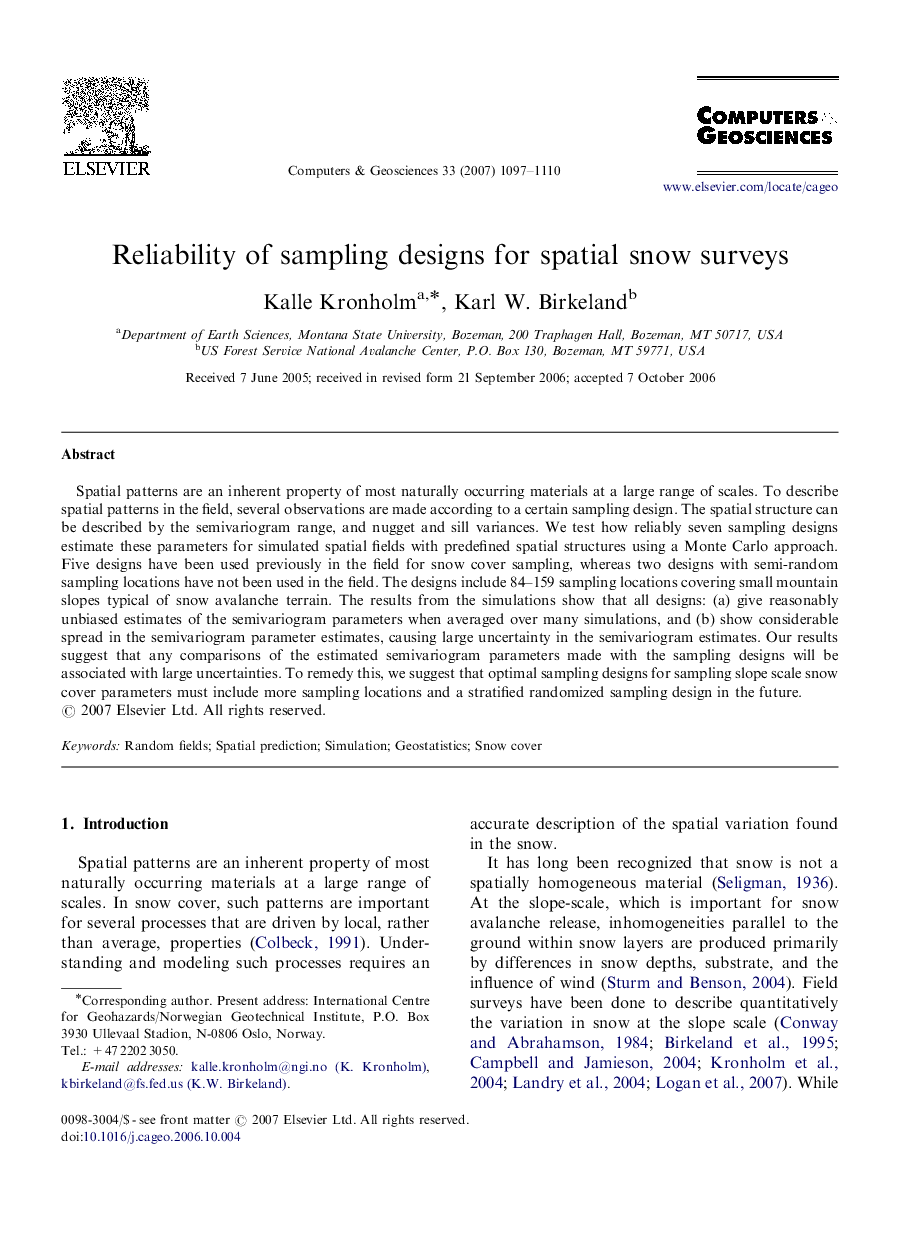| Article ID | Journal | Published Year | Pages | File Type |
|---|---|---|---|---|
| 508436 | Computers & Geosciences | 2007 | 14 Pages |
Spatial patterns are an inherent property of most naturally occurring materials at a large range of scales. To describe spatial patterns in the field, several observations are made according to a certain sampling design. The spatial structure can be described by the semivariogram range, and nugget and sill variances. We test how reliably seven sampling designs estimate these parameters for simulated spatial fields with predefined spatial structures using a Monte Carlo approach. Five designs have been used previously in the field for snow cover sampling, whereas two designs with semi-random sampling locations have not been used in the field. The designs include 84–159 sampling locations covering small mountain slopes typical of snow avalanche terrain. The results from the simulations show that all designs: (a) give reasonably unbiased estimates of the semivariogram parameters when averaged over many simulations, and (b) show considerable spread in the semivariogram parameter estimates, causing large uncertainty in the semivariogram estimates. Our results suggest that any comparisons of the estimated semivariogram parameters made with the sampling designs will be associated with large uncertainties. To remedy this, we suggest that optimal sampling designs for sampling slope scale snow cover parameters must include more sampling locations and a stratified randomized sampling design in the future.
